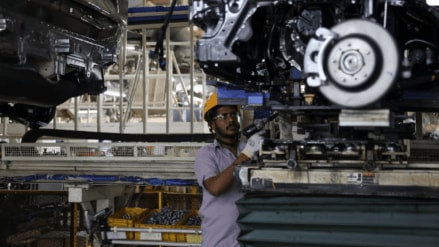India’s manufacturing activity recorded a slight drop to 58.1 in July, as compared to 58.3 in June, however, it still indicated a substantial improvement in the health of the sector, data released by S&P Global on Thursday showed. The latest reading was above the series long-run average and one of the highest seen in recent years.
The manufacturing sector continued to post impressive growth in July, despite slightly softer increases in new orders and output. The HSBC report stated that the key positive developments seen in the latest results included one of the fastest expansions in international sales for over 13 years and another robust round of job creation.
That said, buoyant demand also exerted pressure on prices. Input costs rose at one of the quickest rates in nearly two years, which contributed to the steepest increase in selling prices since October 2013. The release stated that the buoyant demand conditions created a ripple effect across the manufacturing industry mainly through a substantial upturn in new work intakes. Despite the slowdown in the manufacturing activity since June, the pace of sales growth, it added, was sharp in the context of historical data.
Pranjul Bhandari, Chief India Economist, HSBC, said, “India’s headline manufacturing PMI showed a marginal slowdown in the pace of expansion in July, but with most components remaining at robust levels, the small drop is no cause for concern. New export orders remain a bright spot, rising by 1pt to the second-highest level since early-2011. The continuous increase in the output price index, driven by input and labour cost pressure, may signal further inflationary pressure in the economy.”
S&P Global said that the production volumes were raised substantially at the start of the second fiscal quarter and the rate of growth eased from June. With demand conditions remaining favourable and new orders coming in, goods producers purchased additional inputs in July. In turn, strong input demand drove cost inflation higher. Manufacturers reported having paid more for coal, leather, packaging, paper, rubber and steel. The goods producers sought to protect margins from cost increases by raising selling prices.
Amid reports of strengthening demand from clients based in Asia, Europe, North America and the Middle East, Indian manufacturers experienced a robust increase in international sales during July. The overall rate of expansion was the second-strongest in over 13 years.
Furthermore, companies also took on extra staff in July, with offers of both permanent and short-term contracts highlighted by anecdotal evidence. The latest increase in employment was softer than in June, though one of the strongest in the survey’s history.
